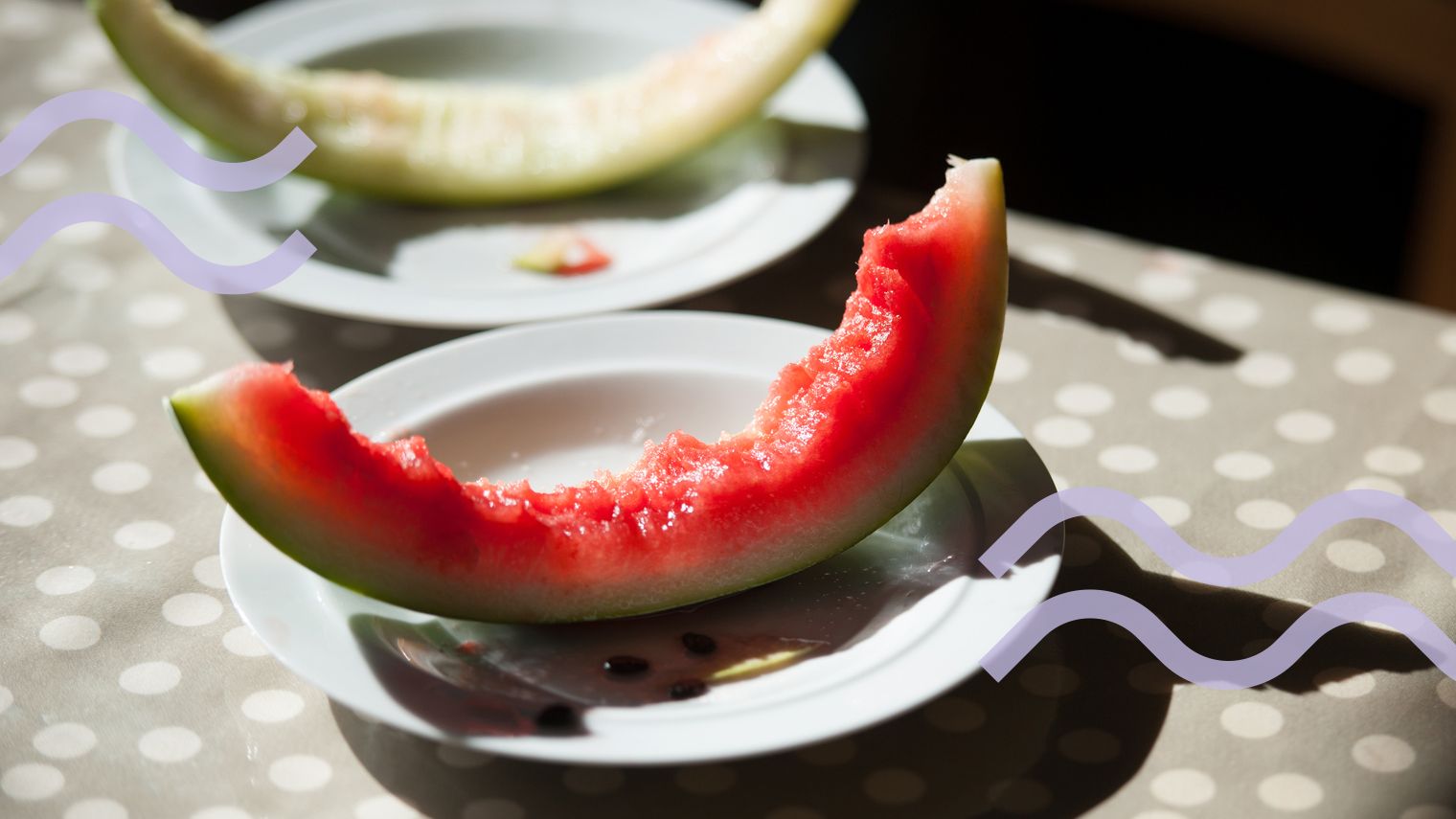7 Tips That Help Me Stay Hydrated in Warm Weather with IBD
June 29, 2022
Content created for the Bezzy community and sponsored by our partners. Learn More

Lee Avison/Stocksy United
Before you say “Oh no!” to more H20, consider these additional strategies to keep dehydration at bay.
With summer arriving, temperatures are soaring. Of course, it’s important for those of us with inflammatory bowel disease (IBD) to stay on top of our hydration game year-round. That’s because we already run the risk of dehydration, thanks to symptoms like diarrhea from intestinal inflammation and sweating from a flare-related fever.
In addition, if you have had your colon surgically shortened or removed, your ability to absorb and retain fluids and electrolytes is reduced. All of these factors can make it more difficult for people with IBD to stay hydrated, whatever the weather.
In the summer months, it’s even more vital: When it’s hot, we sweat more and lose even more fluid. And dehydration seems to make my Crohn’s disease symptoms even worse. Every time there’s a heatwave or I travel to a hot climate, I seem to experience diarrhea and stomach cramps.
My gut just does not seem to be able to handle hot temperatures! There is also some evidence that heatwaves make IBD worse. One older study found that heat waves increased the risk of IBD flares by 4.6 percent.
I lived in China for 3 years and found summers there very difficult. I often ended up in the hospital with IBD symptoms as well as dehydration during hot weather. Of course, this increase of IBD symptoms often means an increase in diarrhea or stoma output, too, creating a vicious cycle in which you lose more fluid and again are at more risk of dehydration.
This can be particularly concerning for people with an ileostomy. Around 20 to 30 percent of those with an ileostomy are readmitted to the hospital after the procedure, and the leading cause of this is dehydration.
To keep feeling your best this summer, try some or all of the following tips to stay hydrated.


1. Track your fluid intake
It’s really important to keep track of how much you drink, since it’s easy to believe you’re getting enough fluid if you don’t feel thirsty. But thirst is not a reliable indicator of hydration status.
Some people use an app to record their fluid intake or set hourly alerts on their phone as reminders to get drinking. (Tip: You can ask Amazon’s Alexa to do this!).
I personally use a water-tracking bottle that has hourly lines marked on it to make sure I’m sipping throughout the day. This helps me get into the habit of drinking when I’m out of the house and wouldn’t usually have a glass in hand.
Other bottles contain sensors and light up if you’re not drinking enough. If you find it difficult to keep up your enthusiasm for drinking water, you can also buy bottles with motivational messages to give you a boost.
2. Don’t just replace water
When we lose too much fluid, we actually lose more than water; we also lose electrolytes like magnesium and sodium. These electrolytes are vital for all kinds of bodily functions, including muscle and nerve function, and when we simply drink more water, we neglect to reintroduce the electrolytes our body needs.
If we become deficient in magnesium, it can lead to symptoms such as muscle cramps, nausea, loss of appetite, and fatigue, according to the U.K.’s National Institutes of Health.
People who are particularly at risk of dehydration can drink electrolyte-replacement beverages. These are commercially available but it’s also possible to make your own. A commonly suggested recipe in the UK is known as St. Mark’s solution.
You can also purchase electrolyte powders or tablets that you can stash in your pocket or purse and mix in with water when you need them.
3. Get your water through food, too
If you can’t face drinking any more water, don’t worry — I’ve been there, too! Remember that you can also eat your water. Foods that are high in water content, such as melons and cucumbers, are refreshing in hot weather.
In the summer, I often make homemade popsicles with water, strawberries, and cucumber. Or sometimes for a refreshing twist, I make melon sorbet. Of course, other liquids count for your water intake, too, such as juice or coconut water. Don’t forget about cold summer soups, either — gazpacho can be a lovely treat.
4. Add some flavor
Sometimes I just can’t face plain water, so I will add some flavor. I use a water bottle that creates fruit-infused water. I just add strawberries, cucumber, or mango to the inner basket, let it sit, and voilà! I have a fruity, sweet water that’s much easier to sip.
However, I personally avoid flavored waters from the supermarket. These often contain sweeteners such as aspartame or stevia, which often aggravate my gut.
A 2018 study even found that sucralose (commonly known by its brand name, Splenda), promoted dysbiosis in mice that had a rodent version of Crohn’s disease. It’s always important to remember that animal research doesn’t necessarily produce the same results in humans, but it might explain my bad reactions to alternative sweeteners.
5. Take small sips throughout the day
While a bid to stay hydrated may mean a sudden need to increase your water intake, it shouldn’t mean gulping lots of water at once. I find that if I chug a whole glass of water at once (especially if it’s ice-cold), it can cause my bowels to spring into action and I need the toilet!
The NHS recommends that we drink 6-8 glasses of water per day and space them out across the day. In the United States, the government recommends 13 cups of fluid daily for men and 9 for women, obtained through beverages or food.
6. Avoid alcohol and caffeine
Alcohol and IBD aren’t a great mix. First, alcohol can trigger an IBD flare or worsen existing symptoms. Second, while alcohol may quench your thirst, it is also a diuretic.
Diuretics, which also include coffee and tea, make your body get rid of more water. As a result, these types of drinks can quickly dehydrate you further. If I ever drink alcohol, I always stick to one or two glasses and alternate each with a glass of water, for this reason.
7. Know the signs of dehydration
Another practical thing is to actually know the signs of dehydration. Just having IBD doesn’t automatically mean you will become dehydrated or need to suddenly increase your water intake, so look out for the clues.
The most obvious clue is feeling like you need to drink more. The color of your urine is also a giveaway: If it’s pale, you know you’ve drunk enough, but a darker shade of yellow means you need to grab a glass of H2O.
Other signs I look out for include feeling dizzy and feeling fatigued. Nausea, headache, rapid heartbeat, and muscle cramps can be signs that your dehydration is getting worse.
The takeaway
You can take numerous steps to slash your risk of becoming dehydrated.
However, if your IBD is flaring, it is not always possible to manage your dehydration. If you are having trouble with fluid intake or experiencing symptoms of severe dehydration, it’s important to get medical attention immediately.
Medically reviewed on June 29, 2022
11 Sources


Like the story? React, bookmark, or share below:
Have thoughts or suggestions about this article? Email us at article-feedback@bezzy.com.
About the author